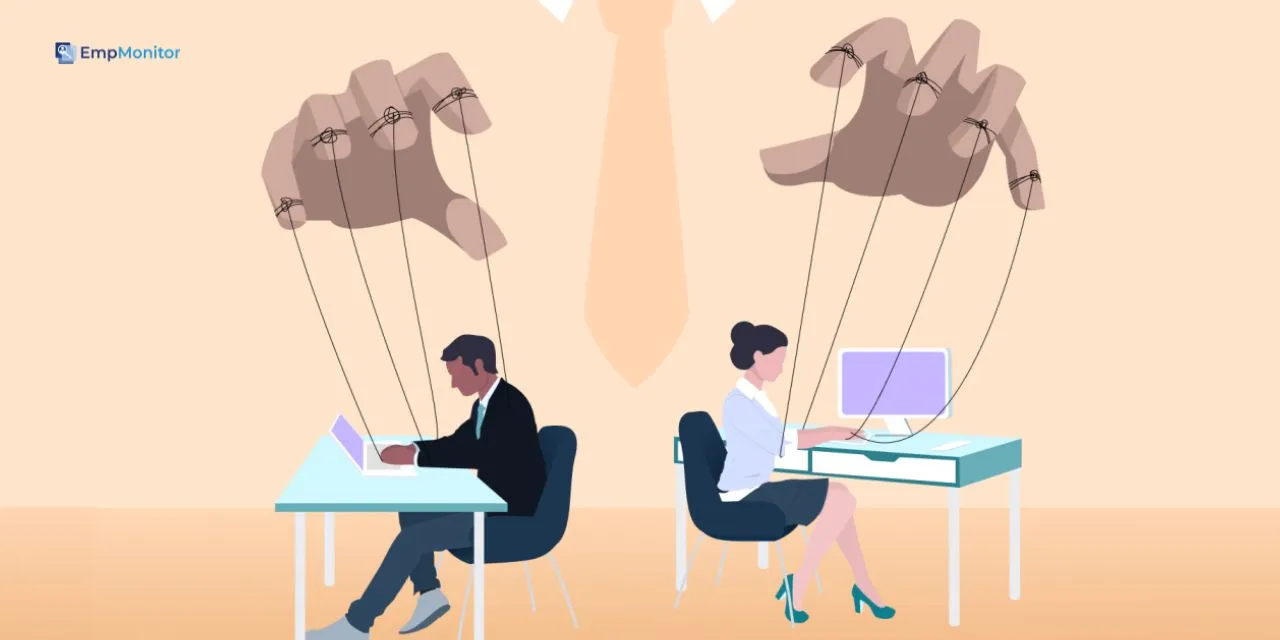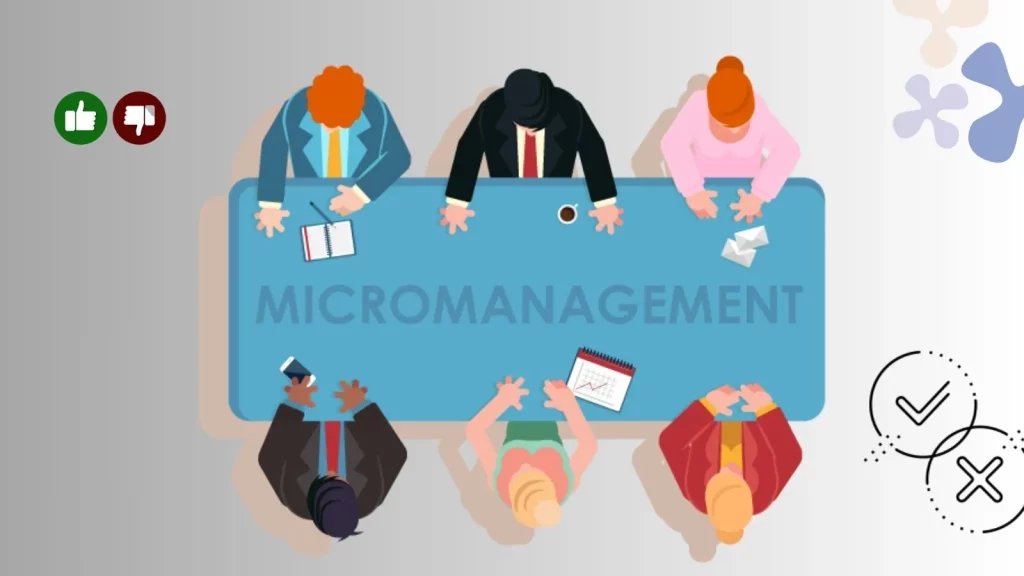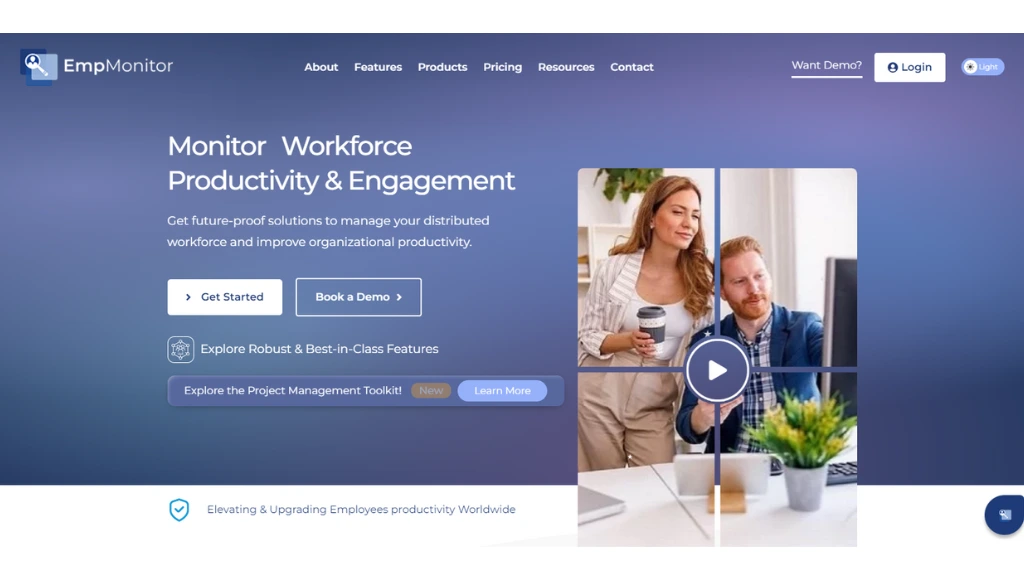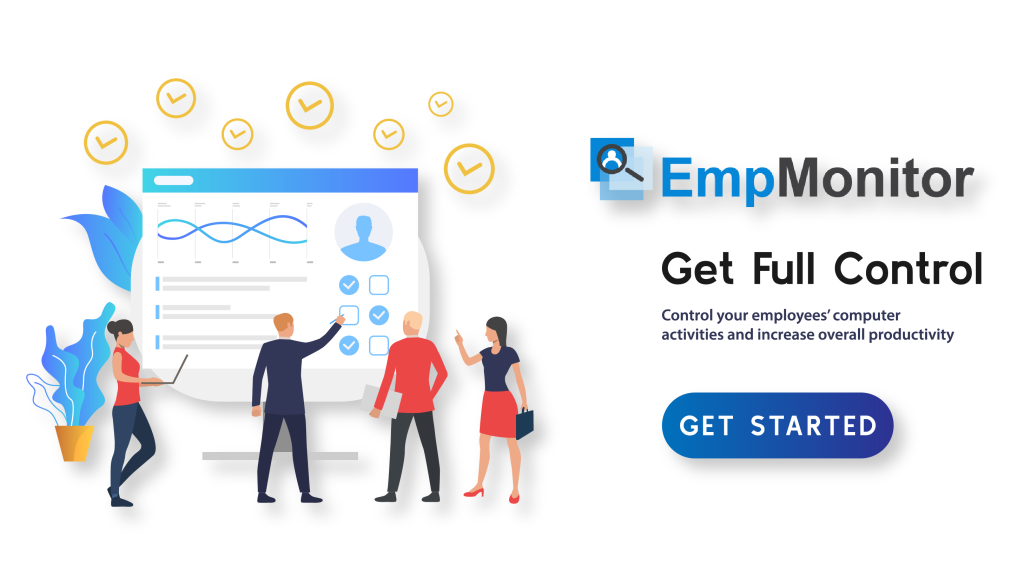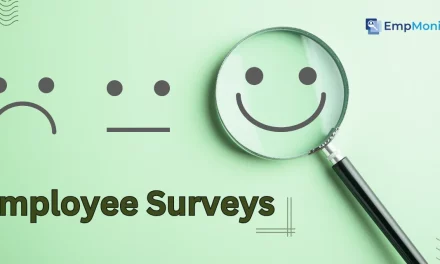Hey there! Have you ever worked with someone who wants to know every little detail of what you’re doing? That’s what we call a micromanager. They mean well, but sometimes it can feel a bit too much, right?
In this blog, we’re diving into how to handle working with a micromanaging coworker, explore what micromanagement is all about and we’ll share some strategies to make your work life smoother when you’re dealing with this kind of colleague. So, if you’ve ever felt like someone is hovering a bit too close, stick around! Here is some helpful advice coming your way.
IN A HURRY? LISTEN TO THE BLOG INSTEAD!
What Is Micromanaging?
Micromanaging happens when a boss, team leader, or coworker gets involved in everything. They might check every little thing, give tons of feedback on small stuff, and set super tight deadlines.
When your boss controls every step, it can make you feel like you’ve got no say in what you do each day. That can make work less fun and make it harder to get things done.
Sometimes, it gets so tough that people decide to leave their jobs and cause employee burnout.
Is Micromanagement Good or Bad?
Micromanagement is generally considered not good in most work environments and it also affect employee relation. While it might stem from good intentions, such as ensuring quality or staying involved, it often leads to several negative outcomes.
Here are the effects of micromanagement:
Demotivation: It makes people feel less confident and motivated because they think their boss doesn’t trust them.
Less Creativity: Micromanagement stops people from coming up with new ideas because they’re too focused on following orders.
Low Morale: It can make the team feel unhappy and less excited about their work.
Stress and Anxiety: Constant monitoring and lack of freedom can stress people out and make them anxious about their work.
Reduced Productivity: Micromanagement takes up time and stops people from working efficiently, and to improve this you can use workforce management tools.
Lack of Growth: When bosses control everything, it’s harder for the team to learn and grow in their roles.
But, in certain situations, particularly in industries with stringent regulations or critical safety concerns, a certain level of oversight might be necessary to maintain standards and compliance. Additionally, for new employees or in high-stakes projects, some guidance or more hands-on involvement can be beneficial initially until they get familiar with the work.
However, the overarching consensus leans heavily towards the negative impacts of micromanagement. It’s often seen as counterproductive, stifling growth and hindering a positive work culture.
Strategies For Dealing With A Micromanaging Coworker
Working alongside a micromanaging coworker can be challenging, but there are effective strategies to navigate this situation while maintaining your productivity.
Open Communication:
Start by initiating a conversation with your micromanaging coworker. Express your willingness to collaborate while carefully addressing your discomfort with excessive oversight. Emphasize your desire to contribute effectively and suggest a more balanced approach to working together.
Set Clear Expectations:
Clearly define roles, responsibilities, and expectations. Ensure your micromanaging coworker understands your capabilities and commitments. Establish boundaries that allow for freedom while confirming accountability for your work.
Build Trust Through Competence:
Consistently deliver high-quality work to gain their trust. Showcase your competence by meeting deadlines, achieving goals, and providing regular updates on your progress. It can reduce their need for constant supervision.
Establish Diplomatic Boundaries:
Politely assert boundaries by expressing gratitude for their guidance while politely requesting space to execute tasks independently. Offer updates at agreed intervals to assure them of your progress without constant supervision.
Seek Clarification And Feedback:
When given instructions that feel overly detailed, seek clarification to ensure you understand the expectations. Additionally, ask for feedback after completing tasks. It shows initiative and willingness to improve while delicately telling your capability.
Maintain Professionalism:
Remain composed and professional despite the challenges. Avoid conflict and instead focus on finding common ground. Being patient and respectful can gradually ease micromanaging tendencies.
Use AI tools Like EmpMonitor For Productivity Tracking:
Use technology to streamline work and provide transparency without feeling micromanaged. EmpMonitor offers automated time tracking and productivity analysis. Use this tool to track your work hours, tasks completed, and productivity metrics. Share periodic reports with your coworkers, showcasing your productivity and efficiency.
EmpMoniter: Workforce Management Tool
EmpMonitor is an ideal solution for optimizing workforce productivity, tracking unproductive time and attendance, and enhancing cyber security across various sectors of business and services. With EmpMonitor, users can take business productivity to the next level.
The software offers employers a feature-rich, cloud-based employee monitoring software with real-time insights. Here are some features of EmpMoniter that will help you in dealing with micromanaging coworker:-
Time Tracking: EmpMonitor helps you track the time you spend on tasks, showing when you start and finish work. It’s like a digital clock that records your work hours.
Activity Monitoring: This tool keeps an eye on what you’re doing on your computer, like which apps or websites you’re using. It helps your boss see how you’re spending time at work.
Productivity Analysis: EmpMonitor shows how productive you are by tracking the tasks you complete. It’s like a report card that shows how well you’re working.
Screenshots and Keystroke Logging: It takes pictures of your screen and records what you type. This helps your boss understand how you’re working and if you need any help.
Remote Work Support: Whether you’re in the office or working from home, EmpMonitor works wherever you are. It helps your boss manage and understand how you’re working, even when you’re not in the same place.
These features help employers understand how their employees work and can help employees showcase their productivity without feeling micromanaged and that’s why you should opt macro-managing over micromanaging.
Seek Support When Needed:
If the situation continues and significantly affects your work, consider seeking support from a supervisor or HR.
Although dealing with a micromanaging coworker is annoying, you can minimize your frustration by staying calm, being firm with your boundaries, and exercising compassion towards them.
Dealing with a micromanaging coworker requires a delicate balance of assertiveness, diplomacy, and professionalism. By following these strategies, you can reduce the effects of micromanagement while preserving productive coworker relationships. Remember, navigating this situation may take time, patience, and adaptability.
ALSO READ:
Here Is Why You Should Opt Macro-Managing Over Micromanaging
Harnessing Successful Employer-Employee Relations: 12 Best Practices
How To Maintain Employee Monitoring Ethics At Workplace
Employee Burnout Causes, Symptoms, & How To Prevent
How To Stop Yourself Micromanaging Others
How to be a good coworker? Sometimes, we all struggle with that urge to oversee everything our team does. But here’s the scoop: you can avoid being seen as a control freak by making a few improvements.
First off, try practicing delegation. Knowing your team’s strengths lets you hand out tasks wisely, which helps them learn and grow.
Next, set things straight from the get-go. Clear project goals and deadlines keep everyone on the same page and stop you from taking on too much.
Ditch the idea of perfectionism. Different paths can lead to success. Letting your team experiment builds trust and growth.
Also, aim to bring in the right people. Having an awesome team means less need for constant hand-holding.
By following these steps, you’ll not only avoid micromanagement in the workplace but also have awesome coworkers or colleagues who will foster growth and success in the organization.
Wrapping Up
Trying to find ways to deal with a micromanager boss, or coworker can get tiring. Dealing with a difficult boss micromanager is never easy, and you need to work on various aspects to ensure you are meeting their expectations.
Of course! Navigating a work environment with a micromanaging coworker can be challenging, but it’s not without solutions. By understanding their behavior and employing effective strategies, you can drive the situation toward a more productive and harmonious dynamic.
Remember that navigating such situations is about finding balance and fostering a healthy work environment. While the strategies shared above can be incredibly helpful, and with the help of the EmpMonitor tool, you can streamline this process.
EmpMonitor can be a valuable asset in understanding the dynamics of micromanagement within your team.
Dealing with a micromanaging coworker might not be a walk in the park, but by employing patience, communication, and a collaborative mindset, you can deal with these challenges effectively while fostering a more supportive and productive as well as maintain employee monitoring ethics at workplace.

